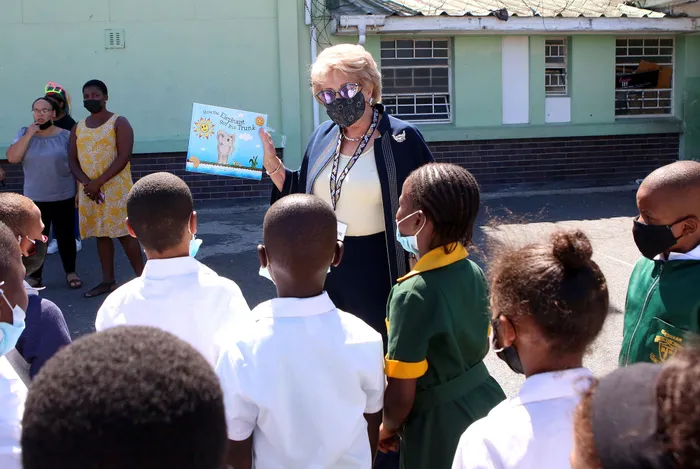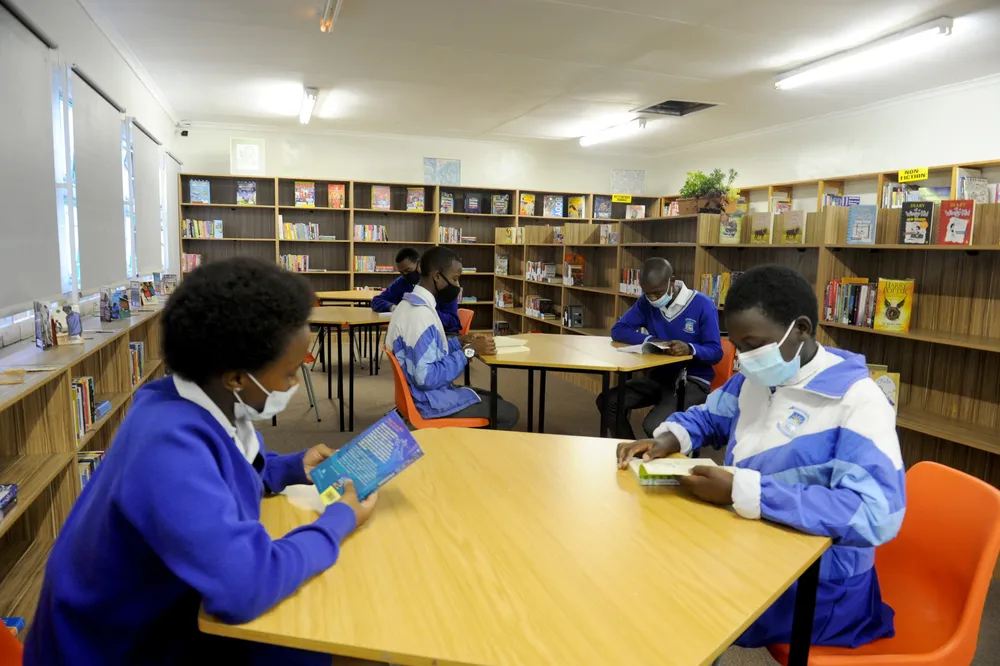Why African schools need curriculum reform pronto

Picture Credit: Brendan Magaar/African News Agency(ANA) - Businesswoman and philanthropist Wendy Ackerman, at the official opening of Ackerman Reading Adventure Room at Cypress Primary School in Bridgetown, Cape Town.
Picture: Armand Hough/African News Agency(ANA) – Reforming the country’s schools curriculum is an important and long overdue aspect of ensuring that South Africa keeps up with the changing demands of the local and global labour market, the writer says.
By Edwin Naidu
Robotics and coding will form part of the curriculum at public schools in South Africa to ensure that children are able to take part in the economy and meet the needs of global markets. The challenge now for minister of Basic Education Angie Motshekga is to bring teachers up to speed to impart skills for the 21st century.
Of course, it is a myth to suggest that the days of the chalk and board are over since most schools will not have access to modern teaching technologies. But the step announced by the minister is a welcome step in the right direction.
Reforming the country’s schools curriculum is an important and long overdue aspect of ensuring that South Africa keeps up with the changing demands of the local and global labour market.
Many question the relevance of certain subjects, but it is important to ensure that children have choices, that what they are taught is relevant and gives them an edge in the world after school.

Few would argue that teachers are most important in delivering on this, but the plan for a government that has struggled to prepare South African children for a meaningful future may seem ambitious when you consider that it wants to introduce new subjects in grades 10 to 12 in a bid to strengthen the country’s curriculum.
Given the country’s high unemployment rate, particularly millions of youth facing a bleak jobless future, basic education seeks to add entrepreneurship, digital literacy, climate change and citizenship into the curriculum.
Seven out of every ten young people are unemployed, some with NSC (South African National Senior Certificate) and some with university-level qualifications. It looks worse considering the matric examinations and how many learners get a bachelor’s or national diploma. A low percentage of learners who make it through the system use the NSC qualification to access further education and training. If this is not a crisis, we would not know one staring it in the face.
Teachers cannot be pleased with what they’ve heard in a recent virtual meeting of the Portfolio Committee on Basic Education that lamented the low percentage of learners who make it through the system to university. The pass rate of learners is a miserly 33 percent, meaning that there are not enough students able to use the NSC qualification to access further education and training.
The low rate of pupils making it through the system is incumbent on teachers and pupils, who need to pull up their socks. It is easy to lay blame at the door of Motshekga, but one has to look at the root of the problems.
While they may go deeper, the reality is that coding and robotics and other essential skills for the 21st century is not a panacea to the problems. South Africa needs a mindset change. Teachers must teach. Learners must learn. That desire has to take form before the country can pin its hopes on technology, making a difference where humans have failed.
During the portfolio committee meeting, Umalusi, spoke on its international benchmarking and subject analysis of the NSC study. The purpose of the current study was to understand the standing of the NSC in relation to similar qualifications from five other jurisdictions 12 years after similar research was conducted in 2010. South Africa has its history and context. This means what may flourish in another educational context may not flourish in the South African context.

The following five subjects were selected:
English FAL:
- Geography
- Life Sciences (Biology)
- Mathematics
- Physical Sciences
The reason behind the selection was benchmarking in well-established countries and countries of equal economic status in the region and abroad.
The study employed a three-step approach identifying and critically analysing qualification’s core components and the underpinning quality assurance mechanisms, undertaking a comparative analysis and an evaluation and benchmarking.
What was clear from the study was that all analysed qualifications seek to enable students to progress to either higher/further education or the world of work, something not working in South Africa.

This is why the review of the curriculum, long overdue, is essential in ensuring that the foundation for future learners may be strengthened. While the Umalusi study found effectiveness in having compulsory subjects, for example, Life Orientation was meant to equip learners to get by in South Africa by teaching soft skills, as this might make learners better able to adapt to the environment. The study has shown that the NSC is comparable to the other countries analysed but does not achieve the same outcomes.
A point raised during the discussion was a question about why many people who come from Kenya and Zimbabwe easily enter and participate in the South African economy. Still, South Africans have a high unemployment rate. It makes one wonder about our work ethic.
Given that Motshekga has shown the way forward on subjects for the 21st century, a greater study must address the system’s failure in producing students willing and able to work with an entrepreneurial mindset.
The Umalusi study has nuggets of information. Politicians agree that what works in another country may not apply in South Africa. Motshekga would be remiss not to look at the Umalusi recommendations since it is the organisation responsible for setting and monitoring standards for general and further education and training in South Africa.
Introducing new subjects is good, but we must ensure teachers can deliver on them. More importantly, what steps can be taken to ensure that the school system stops spewing out children with its 33 percent pass rate?
Naidu is a journalist and communications expert. He is also head of Higher Education Media Services – a social enterprise start-up committed to stimulating dialogue and raising awareness around education and the socio-economic, environmental, and political factors it influences in South Africa and the African Continent.
This article is original to the The African. To republish, see terms and conditions.